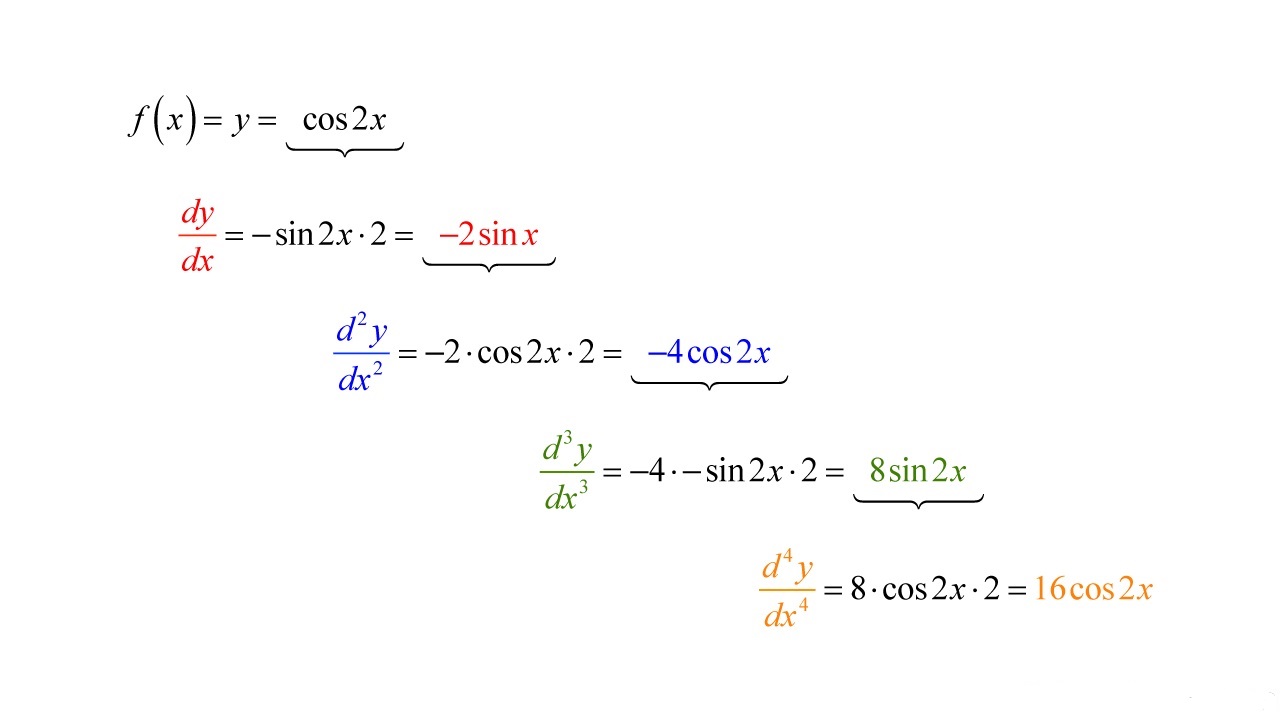

Finance
How To Find Oversold Stocks
Published: January 18, 2024
Learn how to find oversold stocks in the finance market and make profitable investment decisions. Discover effective strategies and methods for identifying undervalued opportunities.
(Many of the links in this article redirect to a specific reviewed product. Your purchase of these products through affiliate links helps to generate commission for LiveWell, at no extra cost. Learn more)
Table of Contents
- Introduction
- Understanding Oversold Stocks
- Technical Indicators for Identifying Oversold Stocks
- Moving Average Convergence Divergence (MACD)
- Relative Strength Index (RSI)
- Stochastic Oscillator
- Money Flow Index (MFI)
- Volume
- Fundamental Analysis for Identifying Oversold Stocks
- Earnings Reports
- Balance Sheet Analysis
- Market News and Sentiment Analysis
- Combining Technical and Fundamental Analysis
- Evaluating Oversold Stocks for Investment Opportunities
- Setting Entry and Exit Points
- Risks and Considerations
- Conclusion
Introduction
Investing in the stock market can be a profitable venture, but it also comes with its fair share of risks. One strategy that many investors use is finding oversold stocks. These are stocks that have experienced a significant price decline and are trading at a price below their intrinsic value.
By identifying oversold stocks, investors can potentially find great buying opportunities. These stocks may have temporarily fallen out of favor with the market, leading to undervaluation. Buying at a low price can position investors for potential future gains when the stock price rebounds.
However, it is important to note that investing in oversold stocks is not without risks. Just because a stock is trading at a low price does not guarantee that it will bounce back. It is essential to conduct thorough research, analyze the market conditions, and consider both technical and fundamental factors before making any investment decisions.
In this article, we will explore how to find oversold stocks and the various indicators and strategies that can help identify them. We will delve into both technical indicators and fundamental analysis to provide a comprehensive understanding of the process. By combining these approaches, investors can make more informed decisions and increase their chances of success in the stock market.
Understanding Oversold Stocks
Oversold stocks refer to stocks that are selling at a price level that is significantly lower than their fair value. This situation often occurs when there is a surge in selling pressure, causing the stock price to decline rapidly. As a result, the stock becomes undervalued relative to its intrinsic worth.
When a stock is oversold, it means that investor sentiment towards the company is negative, leading to an excessive decline in the stock price. It can arise from various factors, such as poor earnings reports, negative market sentiment, or broader economic concerns. Investors who can identify these oversold stocks have the potential to capitalize on the market’s overreaction and potentially profit from the stock’s rebound.
While identifying oversold stocks may seem straightforward, it requires a combination of technical analysis and fundamental understanding. Technical analysis involves studying the stock’s price movements and patterns using various indicators and charting techniques. Fundamental analysis, on the other hand, involves evaluating the company’s financial health, industry position, and growth prospects.
It is important to note that not all oversold stocks are worth investing in. Some may have underlying issues that prevent them from recovering, even in the long run. Therefore, it is crucial to conduct thorough research and analysis before making any investment decisions.
Understanding the concept of oversold stocks allows investors to take advantage of potential opportunities in the market. By identifying undervalued stocks and using appropriate investment strategies, investors can aim to achieve profitable returns.
Technical Indicators for Identifying Oversold Stocks
Technical indicators play a crucial role in identifying oversold stocks. These indicators analyze historical price and volume data to help investors understand the market sentiment and identify potential buying opportunities. Here are some commonly used technical indicators for identifying oversold stocks:
- Moving Average Convergence Divergence (MACD): MACD is a trend-following momentum indicator that helps identify potential overbought or oversold conditions. When the MACD line crosses below the signal line and enters negative territory, it suggests that the stock may be oversold and due for a bounce.
- Relative Strength Index (RSI): RSI measures the speed and change of price movements and ranges from 0 to 100. A stock with an RSI below 30 is considered oversold, indicating that it may be undervalued and due for a potential upward reversal.
- Stochastic Oscillator: The stochastic oscillator helps identify oversold and overbought conditions by comparing the closing price of a stock to its price range over a specific period. When the stochastic oscillator falls below 20, it suggests that the stock is oversold and could be poised for a rebound.
- Money Flow Index (MFI): The MFI combines both price and volume data to measure the buying and selling pressure in a stock. An MFI below 20 indicates an oversold condition, indicating that the selling pressure has exceeded the buying pressure.
- Volume: Volume is a useful indicator to assess the market’s interest and participation in a stock. When a stock undergoes a significant price decline with an unusually high trading volume, it could be a sign of panic selling, potentially creating an oversold condition.
While these technical indicators can provide valuable insights, it is essential to use them in conjunction with other forms of analysis to validate the oversold condition. Additionally, investors should be aware that technical indicators are not infallible and may produce false signals at times. Therefore, it is crucial to combine technical analysis with fundamental analysis to make well-informed investment decisions.
Moving Average Convergence Divergence (MACD)
The Moving Average Convergence Divergence (MACD) is a popular technical indicator used by traders and investors to identify potential buying or selling opportunities in the stock market. It consists of two lines: the MACD line and the signal line. The MACD line represents the difference between two exponential moving averages, typically the 12-day and 26-day periods, while the signal line is a 9-day exponential moving average of the MACD line.
When using the MACD to identify oversold stocks, traders look for a crossover of the MACD line below the signal line, entering negative territory. This crossing signifies a potential shift in price momentum, indicating that the stock may be oversold and due for a rebound. Traders often interpret this as a buying opportunity.
Additionally, the distance between the MACD line and the signal line can provide further insights. A wider gap suggests a stronger bearish sentiment and possibly a more oversold condition, while a narrower gap may indicate a potential reversal of the downward trend.
When using the MACD to identify oversold stocks, it is important to consider other factors, such as the overall trend, trading volume, and support levels. Placing the MACD within the broader context of technical and fundamental analysis can help provide a more comprehensive understanding of the stock’s potential direction.
While the MACD is a powerful tool, it is not infallible. Traders should avoid relying solely on this indicator and consider it as part of a broader analysis. False signals can occur, especially during periods of low trading volume or erratic market conditions. Therefore, it is crucial to confirm the oversold condition using other technical indicators and fundamental analysis before making any investment decisions.
In summary, the Moving Average Convergence Divergence (MACD) is a widely used technical indicator for identifying potential oversold stocks. By analyzing the relationship between the MACD line and the signal line, traders can spot potential shifts in price momentum and identify buying opportunities. However, it is important to use the MACD in conjunction with other analysis techniques to validate the oversold condition and reduce the risk of false signals.
Relative Strength Index (RSI)
The Relative Strength Index (RSI) is a popular technical indicator used by traders and investors to identify potential overbought or oversold conditions in stocks. It measures the speed and change of price movements on a scale of 0 to 100. The RSI is calculated using a formula that compares the magnitude of recent gains to recent losses over a specified time period, typically 14 days.
When using the RSI to identify oversold stocks, traders look for readings below 30. This indicates that the stock may be oversold and potentially undervalued, suggesting that it could be due for a price rebound. It is important to note that an RSI reading below 30 does not guarantee an immediate reversal, but rather serves as a signal for potential buying opportunities.
Conversely, an RSI reading above 70 is considered an indication of overbought conditions, suggesting that the stock may be due for a price correction or pullback. Therefore, traders often view RSI values below 30 as a sign to enter a long position or buy the stock, while RSI values above 70 may signal a potential exit or sell signal.
Aside from identifying overbought or oversold conditions, the RSI can also provide insights into the strength and sustainability of a stock’s current trend. Additionally, bullish or bearish divergences between the RSI and the stock’s price can signal potential trend reversals.
While the RSI is a useful tool, it is important to consider other factors in conjunction with the RSI to validate the oversold condition. Traders should consider the overall trend, trading volume, and support levels to ensure they are making well-informed decisions. False signals can occur, especially in choppy or volatile markets, so it is essential to use the RSI in conjunction with other technical indicators and fundamental analysis.
In summary, the Relative Strength Index (RSI) is a widely used technical indicator for identifying potential oversold conditions in stocks. Traders and investors rely on the RSI to gauge the speed and change of price movements and identify buying opportunities. However, it is important to use the RSI in conjunction with other analysis techniques and consider other market factors to validate the oversold condition and reduce the risk of false signals.
Stochastic Oscillator
The Stochastic Oscillator is a popular technical indicator used by traders and investors to identify potential overbought or oversold conditions in stocks. It compares the most recent closing price of a stock to its price range over a specified period, typically 14 days, to determine the stock’s momentum and potential reversal points.
The Stochastic Oscillator consists of two lines: %K and %D. The %K line represents the current closing price’s position within the recent price range. The %D line is a moving average of the %K line and is more smoothed out. The values of both lines range from 0 to 100.
When using the Stochastic Oscillator to identify oversold stocks, traders look for the %K line to fall below a specific threshold, often 20. This indicates that the stock is trading near the lower end of its recent price range and suggests that it may be oversold. An oversold condition suggests that the selling pressure has pushed the stock’s price to an excessively low level, potentially leading to a rebound in the price.
Traders also look for bullish or bearish divergences between the Stochastic Oscillator and the stock’s price. For example, if the stock’s price is making lower lows while the Stochastic Oscillator is making higher lows, it could indicate a potential reversal of the downtrend and an oversold condition.
It is important to note that the Stochastic Oscillator should be used in conjunction with other technical indicators and analysis tools to confirm the oversold condition. Traders should consider the overall trend, trading volume, and other market factors to make informed decisions.
While the Stochastic Oscillator is a useful tool, it is not foolproof. False signals can occur, especially in choppy or range-bound markets. Therefore, it is important to validate the oversold condition with other technical indicators and fundamental analysis before making any investment decisions.
In summary, the Stochastic Oscillator is a widely used technical indicator for identifying potential oversold conditions in stocks. By analyzing the relationship between the %K and %D lines, traders can identify potential buying opportunities when the %K line falls below a specific threshold. However, it is crucial to use the Stochastic Oscillator in conjunction with other analysis techniques to validate the oversold condition and reduce the risk of false signals.
Money Flow Index (MFI)
The Money Flow Index (MFI) is a popular technical indicator used by traders and investors to measure the buying and selling pressure in a stock or a broader market. It combines both price and volume data to provide insights into the overall market sentiment and potential overbought or oversold conditions.
The MFI is calculated using a formula that takes into account the typical price, volume, and the ratio of positive and negative money flows over a specified period, typically 14 days. The MFI values range from 0 to 100, with readings above 70 indicating an overbought condition and readings below 30 indicating an oversold condition.
When using the Money Flow Index to identify oversold stocks, traders look for MFI readings below 30. An MFI below this threshold suggests that the selling pressure has exceeded the buying pressure, potentially creating an oversold condition. It indicates that the stock may be trading at a lower price than its intrinsic value, presenting a potential buying opportunity.
In addition to oversold conditions, traders also analyze bullish or bearish divergences between the MFI and the stock’s price. For example, if the stock’s price is making lower lows while the MFI is making higher lows, it could signal a potential trend reversal and an oversold condition.
However, it is important to consider the overall trend, trading volume, and other market factors in conjunction with the Money Flow Index. False signals can occur, especially during periods of low trading volume or when the market is in a consolidation phase. Therefore, it is crucial to use the MFI as part of a comprehensive analysis strategy.
The Money Flow Index is a powerful tool, but it should not be relied upon as the sole indicator for making investment decisions. Traders and investors should combine the MFI with other technical indicators and fundamental analysis to validate the oversold condition and reduce the risk of false signals.
In summary, the Money Flow Index (MFI) is a widely used technical indicator for identifying potential oversold conditions in stocks. By analyzing the buying and selling pressure in conjunction with price and volume data, traders can identify oversold stocks and potential buying opportunities. However, it is important to use the MFI in conjunction with other analysis techniques and consider other market factors before making any investment decisions.
Volume
Volume is a fundamental component in technical analysis used by traders and investors to assess the market’s interest and participation in a stock or market. It refers to the number of shares or contracts traded during a given period. Analyzing volume can provide valuable insights into price trends, liquidity, and potential overbought or oversold conditions.
When using volume to identify oversold stocks, traders look for a significant increase in trading volume accompanying a significant decline in price. This combination suggests that there is substantial selling pressure and panic selling may have ensued, potentially leading to an oversold condition.
High-volume sell-offs can be an indication that a large number of investors are exiting their positions, resulting in a downward price movement. This scenario presents a potential opportunity for savvy investors, as the oversold condition may not be justified by the stock’s intrinsic value.
However, analyzing volume alone may not provide a complete picture. Traders should consider the average volume for the stock and compare it to the recent volume spikes. Unusually high volume during a price decline is more indicative of an oversold condition than simply low volume during a price decline. It is important to compare the current volume to historical patterns and averages to identify any anomalies.
In addition, volume analysis can be used in conjunction with other technical indicators to validate oversold conditions. For example, traders may look for the conjunction of high volume, oversold readings on indicators like the Relative Strength Index (RSI) or the Stochastic Oscillator to confirm the potential buying opportunity.
Traders should also be cautious of volume spikes during periods of market volatility or news announcements. Such spikes may not be reflective of a genuine oversold condition but rather short-term speculative activity or market noise. It is crucial to assess the underlying reasons for the volume spike and consider the broader market context.
In summary, volume analysis is a valuable tool for identifying potential oversold conditions in stocks. High trading volume during a price decline may indicate panic selling and overselling, presenting an opportunity for investors. However, it is important to analyze volume in conjunction with other technical indicators, consider historical patterns, and be aware of market conditions to validate the oversold condition and make well-informed investment decisions.
Fundamental Analysis for Identifying Oversold Stocks
While technical indicators play a vital role in identifying oversold stocks, fundamental analysis is equally important in assessing a stock’s underlying value and potential for future growth. Fundamental analysis involves analyzing a company’s financial health, industry position, and market outlook to determine its intrinsic value.
When using fundamental analysis to identify oversold stocks, investors focus on key financial metrics and indicators that can provide insights into a stock’s potential undervaluation. Here are some fundamental factors to consider:
- Earnings Reports: Analyzing a company’s earnings reports can provide insights into its financial performance. A significant decline in earnings may cause the stock price to drop, potentially creating an oversold condition. However, investors should also consider the reasons behind the decline in earnings and assess the company’s ability to recover.
- Balance Sheet Analysis: Assessing a company’s balance sheet can help investors understand its financial stability. Pay attention to factors such as debt levels, cash flow, and liquidity. An oversold condition may arise if market sentiment overlooks a strong balance sheet, leading to undervaluation compared to the company’s underlying assets.
- Market News and Sentiment Analysis: Stay informed about market news and sentiment surrounding the industry and the specific stock. Negative news or sentiment may have caused the stock price to decline, potentially creating an oversold condition. However, be cautious of market noise and analyze the long-term prospects of the company beyond short-term sentiment.
Fundamental analysis can provide a broader perspective on the stock’s intrinsic value and its potential for a rebound. By assessing the company’s financial health, growth prospects, and market position, investors can gain a deeper understanding of the reasons behind the oversold condition. This helps in differentiating between temporary market fluctuations and long-term investment opportunities.
It is important to combine fundamental analysis with technical indicators to validate the oversold condition and increase the probability of success. The combination of technical and fundamental analysis allows investors to make well-informed investment decisions by considering both the immediate market sentiment and the long-term growth potential of the stock.
In summary, fundamental analysis plays a crucial role in identifying oversold stocks. By analyzing earnings reports, balance sheets, and market news, investors can gain insights into a company’s intrinsic value and potential for recovery. Combining fundamental analysis with technical indicators provides a comprehensive view of the stock, enabling investors to make more informed investment decisions.
Earnings Reports
Earnings reports are essential components of fundamental analysis when identifying oversold stocks. They provide valuable insights into a company’s financial performance, including revenue, expenses, and net income, which in turn can impact the stock’s price and potential for being oversold.
When assessing earnings reports for oversold stocks, investors focus on several key factors:
- Revenue Growth: Analyzing a company’s revenue growth is crucial in determining its financial health and market position. A decline in revenue could lead to a negative market reaction and potentially an oversold condition. However, investors should assess the reasons behind the decline and whether it is due to temporary factors or a systemic issue.
- Earnings Per Share (EPS): Earnings per share is a key metric that shows a company’s profitability on a per-share basis. A decrease in EPS compared to previous periods may cause the stock price to decline and create an oversold condition. However, investors should look at the factors contributing to the decline and whether it is a result of one-time events or a long-term trend.
- Guidance and Outlook: Pay attention to the guidance provided by the company’s management in its earnings report. Positive guidance indicating future improvement in financial performance may counterbalance short-term market sentiment and reduce the likelihood of an oversold condition. Conversely, negative guidance may exacerbate selling pressure and potential undervaluation.
It is important to note that earnings reports are not definitive indicators of a stock’s future performance. Other factors, such as market conditions and investor sentiment, can influence how the market reacts to earnings reports. Therefore, it is essential to consider the broader market context and conduct further analysis before determining if a stock is truly oversold based on earnings reports alone.
Additionally, investors should consider the credibility of the company’s earnings reports and the transparency of their accounting practices. Misleading or manipulated earnings reports can distort the true financial picture and impact the stock’s valuation. It is advisable to examine the company’s history of financial reporting and review independent analyst opinions.
In summary, earnings reports provide vital information for assessing a company’s financial performance and potential oversold conditions. By analyzing revenue growth, EPS, and guidance, investors can gain insights into the stock’s valuation and future prospects. However, it is crucial to consider other factors, conduct further analysis, and assess the credibility of the reports before making investment decisions based solely on earnings reports.
Balance Sheet Analysis
Balance sheet analysis is an integral part of fundamental analysis when identifying oversold stocks. It involves examining the financial health of a company by assessing its assets, liabilities, and shareholders’ equity. This analysis provides insights into the company’s financial stability, liquidity, and potential for being oversold.
When conducting balance sheet analysis for oversold stocks, investors focus on several key components:
- Debt Levels: Assessing a company’s debt levels is crucial to gauge its financial risk and potential vulnerability to market downturns. High levels of debt can strain cash flow and impact the stock’s valuation. If a company’s debt levels have caused a decline in stock price, it may be considered oversold.
- Cash Flow: Analyzing a company’s cash flow helps in understanding its ability to generate and manage cash. Positive cash flow indicates a healthy financial position, while negative cash flow may raise concerns. A decline in cash flow can lead to a decline in stock price and create an oversold condition, but investors should investigate the underlying causes.
- Liquidity: Assessing the company’s liquidity position is crucial to determine its ability to meet short-term obligations. The current ratio (current assets divided by current liabilities) and the quick ratio (liquid assets divided by current liabilities) are useful metrics. An unfavorable liquidity position can contribute to a decline in stock price and suggest an oversold condition.
It is important to consider the industry norms and compare the company’s balance sheet with its peers. An oversold condition based on an analysis of the balance sheet may be more pronounced if it shows relatively stronger financial health compared to its competitors. Similarly, if the company’s balance sheet shows signs of financial distress, a drop in stock price may be justified and indicative of broader market sentiment.
It is also essential to evaluate any significant changes in the balance sheet over time. Sudden increases in debt, declines in cash flow, or deterioration in liquidity could signal financial difficulties and contribute to an oversold condition. Examining the company’s financial history and trends provides insights into whether the current situation is a short-term anomaly or a more sustained issue.
In summary, balance sheet analysis is a crucial component of fundamental analysis when identifying oversold stocks. Assessing debt levels, cash flow, and liquidity provides insights into the company’s financial stability and potential undervaluation. However, investors should consider industry norms, compare with peers, and analyze trends to validate the oversold condition and make informed investment decisions.
Market News and Sentiment Analysis
Market news and sentiment analysis play a significant role in identifying oversold stocks. Understanding the broader market sentiment and staying informed about industry-specific news can help investors assess the market’s perception of a stock and its potential for being oversold.
When analyzing market news and sentiment for oversold stocks, investors focus on several key factors:
- Industry News: Stay updated on news and developments within the industry in which the stock operates. Industry-specific events, regulatory changes, or technological advancements can impact the perceived value of a company and its stock price. Negative news affecting an entire industry can contribute to overselling, potentially creating an opportunity for investors.
- Economic Factors: Consider macroeconomic factors, such as interest rates, inflation, and economic indicators, that can influence market sentiment. Economic downturns or concerns can lead to a broad market sell-off, including overselling of stocks. Monitoring economic news can help identify potential oversold conditions caused by market-wide sentiment shifts.
- Market Sentiment Indicators: Pay attention to market sentiment indicators, such as the VIX (Volatility Index), which measures market volatility and investor fear. High levels of market volatility or a sharp increase in the VIX can indicate a higher likelihood of oversold conditions. Similarly, sentiment surveys or sentiment analysis tools can provide insights into investor perception and sentiment towards individual stocks.
It is important to distinguish between short-term market fluctuations and long-term fundamental changes. Oversold conditions driven by temporary market sentiment or rumors may present buying opportunities, as the stock price may not reflect the company’s true value. However, investors should also be cautious of falling into value traps, where the stock may remain oversold due to significant underlying issues affecting the company’s prospects.
By assessing market news and sentiment, investors can gain valuable insights into the potential reasons behind a stock’s oversold condition. They can evaluate if the market reaction is justified or driven by temporary factors. Additionally, analyzing market sentiment in conjunction with other factors such as technical analysis and fundamental analysis provides a more comprehensive view of the stock’s potential for price recovery.
In summary, market news and sentiment analysis are essential when identifying oversold stocks. Staying informed about industry-specific news and monitoring market sentiment indicators helps investors gauge the market’s perception and potential for oversold conditions. However, it is crucial to validate the oversold condition and consider other analysis techniques to make well-informed investment decisions.
Combining Technical and Fundamental Analysis
Combining technical and fundamental analysis is a comprehensive approach that allows investors to gain a deeper understanding of oversold stocks and make more informed investment decisions. While technical analysis focuses on analyzing price patterns and indicators, fundamental analysis delves into the company’s financial health and industry position. By combining these two types of analysis, investors can validate the oversold condition and identify potential investment opportunities.
When combining technical and fundamental analysis for oversold stocks, investors can follow these steps:
- Identify Oversold Signals: Utilize technical indicators such as Moving Average Convergence Divergence (MACD), Relative Strength Index (RSI), and Stochastic Oscillator to identify potential oversold conditions. These indicators can point to potential buying opportunities based on price patterns, momentum, or relative levels.
- Conduct Fundamental Analysis: Analyze the company’s financial statements, earnings reports, balance sheet, and cash flow to assess its intrinsic value and financial health. Evaluate factors such as revenue growth, earnings per share (EPS), debt levels, and liquidity. This fundamental analysis provides insights into the company’s underlying strength and helps validate the oversold condition identified through technical analysis.
- Consider Industry and Market Factors: Take into account industry-specific news, market sentiment, and economic factors that may have influenced the stock’s price decline. Evaluate any regulatory changes, technological advancements, or broad market sell-offs that may have caused an oversold condition. This analysis helps to assess whether the oversold condition is company-specific or part of broader market trends.
- Evaluate Risk-Reward Ratio: Assess the potential risk and reward of investing in the oversold stock. Consider factors such as the company’s growth prospects, market positioning, and competitive landscape. Determine whether the potential upside outweighs the associated risks and make a judgment on the investment opportunity.
By combining technical and fundamental analysis, investors can gain a more comprehensive view of the oversold stock. Technical analysis provides insights into short-term price movements and potential buying opportunities, while fundamental analysis provides a deeper understanding of the company’s financial health and growth potential.
It is important to note that technical and fundamental analysis are complementary tools, and neither should be used in isolation. By using both forms of analysis, investors can reduce the risk of relying solely on one perspective and increase the overall accuracy of their investment decisions.
In summary, combining technical and fundamental analysis is a powerful approach when identifying oversold stocks. This comprehensive analysis helps validate oversold conditions, assess the intrinsic value of a company, and consider broader market and industry factors. By integrating both forms of analysis, investors can make more informed decisions and increase their chances of success in the stock market.
Evaluating Oversold Stocks for Investment Opportunities
When looking to capitalize on oversold stocks, it is important to carefully evaluate the investment opportunities. While an oversold condition suggests potential undervaluation, not all stocks experiencing a price decline are worth investing in. By following a systematic approach, investors can assess oversold stocks and determine if they present favorable investment opportunities.
Here are some key steps to evaluate oversold stocks:
- Perform Comprehensive Analysis: Conduct a thorough analysis that combines technical, fundamental, and market sentiment factors. Consider technical indicators, such as Moving Average Convergence Divergence (MACD) and Relative Strength Index (RSI), to identify oversold conditions. Then, analyze fundamental factors like earnings, revenue growth, and debt levels to assess the company’s financial health. In combination with market news and sentiment analysis, this comprehensive evaluation gives a well-rounded perspective.
- Assess Growth Potential: Evaluate the growth potential of the oversold stock and its industry. Look for signs of recovery or catalysts that could drive future growth. Consider factors such as market demand, competitive landscape, and market trends. A stock that is oversold but operates in a declining or highly competitive industry may not offer significant upside potential in the long run.
- Consider Management and Long-Term Prospects: Examine the company’s management team and their track record. Assess their ability to navigate challenging times and execute strategies for growth. Additionally, consider the long-term prospects of the company, including its ability to adapt to changing market conditions and technological advancements.
- Evaluate Financial Stability: Scrutinize the company’s balance sheet, liquidity position, and debt levels. Assess if the company has the financial stability to withstand continued market volatility and potential challenges. A solid financial position and low debt levels can indicate resilience and increase the likelihood of a price recovery.
- Set Realistic Expectations: Understand that investing in oversold stocks carries risks. It is essential to set realistic expectations for potential price recoveries and timeframes. Oversold stocks may take time to rebound, and it is crucial to be patient and assess the potential return on investment in relation to the associated risks.
Ultimately, the goal is to identify oversold stocks that offer attractive investment opportunities with sufficient upside potential relative to the risks involved. It is crucial to make informed decisions based on a thorough analysis, rather than solely relying on the oversold condition. Diversification and risk management should also be considered to ensure a well-balanced portfolio.
In summary, evaluating oversold stocks requires a comprehensive analysis of technical, fundamental, and market sentiment factors. Look for growth potential, assess financial stability, and consider long-term prospects when identifying investment opportunities. By following a systematic approach and setting realistic expectations, investors can identify potentially favorable opportunities within the pool of oversold stocks.
Setting Entry and Exit Points
Setting entry and exit points is crucial when investing in oversold stocks. Determining the right time to enter and exit a position can maximize potential gains and mitigate risks. While there is no foolproof method, there are strategies and considerations that can help investors set effective entry and exit points.
Entry Points:
When establishing entry points for oversold stocks, consider the following:
- Confirm Reversal Signals: Look for technical indicators, such as bullish candlestick patterns, trendline breaks, or crossover signals, that suggest a potential reversal. These indicators help confirm that the stock is likely to bounce back and reduces the risk of entering too early before the recovery takes place.
- Wait for Price Confirmation: It can be prudent to wait for the stock’s price to show signs of stabilization before entering a position. This confirmation helps ensure that the oversold condition is not a temporary market event and increases the likelihood of making a successful investment.
- Consider Volume and Market Interest: Look for increased trading volume or signs of market interest in the stock. Higher volume can indicate that other investors are also recognizing the potential opportunity, further strengthening the case for entry.
- Utilize Stop-Loss Orders: Implementing stop-loss orders can help limit potential losses in case the stock’s price continues to decline. Set a stop-loss order below your entry point to protect your capital and mitigate downside risks.
Exit Points:
When determining exit points for oversold stocks, consider the following:
- Establish Profit Targets: Set realistic profit targets based on your investment goals and risk tolerance. Determine the level at which you would be satisfied with the gain and consider selling a portion or all of your position once that target is reached.
- Maintain Trailing Stops: Implement trailing stops to protect profits as the stock price rises. A trailing stop assists in capturing additional gains if the stock continues to rally while providing a safety net by automatically adjusting the sell level if the stock declines.
- Monitor Fundamental Factors: Continuously assess the fundamental factors of the company and industry. If there are significant negative changes in the company’s financials, such as declining revenue or deteriorating market conditions, it may be appropriate to exit the position even if the stock has not reached the initial profit target.
- Pay Attention to Technical Indicators: Continuously monitor technical indicators for signs of potential reversals or overbought conditions. If the stock becomes overbought and shows signs of price exhaustion, it may be an appropriate time to exit the position and secure profits.
It is vital to remember that setting entry and exit points involves a degree of subjectivity and personal judgment. Each investor may have different risk tolerance levels and investment goals. Monitoring the market, staying informed, and regularly assessing the stocks in your portfolio will help refine your entry and exit strategies over time.
In summary, when investing in oversold stocks, setting effective entry and exit points is crucial. Confirm reversal signals, wait for price confirmation, consider volume and market interest, and utilize stop-loss orders for entry points. Establish profit targets, maintain trailing stops, monitor fundamental factors, and pay attention to technical indicators for exit points. By combining technical and fundamental analysis, investors can enhance their ability to set appropriate entry and exit points and optimize their investment decisions.
Risks and Considerations
Investing in oversold stocks comes with its own set of risks and considerations. While there are potential opportunities for gains, it is essential to be aware of the following risks and factors before making investment decisions:
- Market Volatility: Oversold stocks are often associated with increased market volatility. The stock price may continue to decline even after entering a position, resulting in further losses. Be prepared for potential fluctuations in the stock price and ensure your investment strategy aligns with your risk tolerance.
- Company-specific Risks: Oversold stocks may be facing underlying issues that contribute to their undervaluation. Poor management, competitive pressures, or declining industry prospects can hinder a stock’s recovery. Conduct thorough research and stay informed about the company’s financial health and industry dynamics to assess these risks.
- False Signals: Technical indicators and oversold conditions are not foolproof. False signals can occur, leading to poor investment decisions. It is crucial to validate the oversold condition using other analysis techniques and consider the broader market context.
- Timing and Recovery Periods: Timing the market and accurately predicting the duration of a stock’s recovery can be challenging. Oversold conditions may persist for an extended period before a stock rebounds. Patience, a long-term perspective, and a well-diversified portfolio are key to mitigating these timing risks.
- Liquidity: Some oversold stocks may have lower liquidity, meaning there may be fewer buyers and sellers in the market. This can result in wider bid-ask spreads and difficulty executing trades at desired prices. Consider the potential challenges associated with liquidity when investing in illiquid oversold stocks.
- Overlooked Fundamental Issues: It is possible that the oversold condition is justified due to fundamental problems or declining growth prospects. Analyze the company’s financial statements, competitive landscape, and long-term outlook to ensure you are not investing in a value trap.
It is crucial to conduct thorough research, diversify your portfolio, and only invest capital you can afford to lose when considering oversold stocks. Implementing risk management strategies such as stop-loss orders and maintaining a well-balanced portfolio can help mitigate potential risks. Additionally, seeking guidance from financial advisors or professionals can provide valuable insights into the specific risks associated with oversold stocks.
In summary, investing in oversold stocks carries risks related to market volatility, company-specific issues, false signals, timing, liquidity, and potential fundamental problems. It is important to conduct thorough research, manage risks, and align investment decisions with your risk tolerance and investment goals. With a cautious approach and proper risk management, oversold stocks can present profitable opportunities for informed investors.
Conclusion
Identifying and investing in oversold stocks can be a potentially rewarding strategy for investors. By understanding the indicators and conducting comprehensive analysis, investors can identify stocks that may be temporarily undervalued and poised for a rebound. However, it is crucial to approach this strategy with caution and consider the inherent risks involved.
Technical indicators such as Moving Average Convergence Divergence (MACD), Relative Strength Index (RSI), Stochastic Oscillator, and Volume can help identify oversold conditions. Fundamental analysis provides insights into a company’s financial health, growth prospects, and market positioning. Combining technical and fundamental analysis strengthens decision-making by covering both short-term price movement and long-term company fundamentals.
When evaluating oversold stocks, it is important to consider risks and factors such as market volatility, company-specific issues, false signals, timing, liquidity, and potential fundamental problems. Setting effective entry and exit points can optimize potential gains and manage risks. Patience, diligent research, and risk management are crucial in successfully navigating the complexities of investing in oversold stocks.
Remember that investing in oversold stocks involves uncertainty and no guarantees of future performance. It is prudent to diversify your portfolio, conduct thorough research, and carefully monitor your investments over time.
In conclusion, identifying, analyzing, and investing in oversold stocks can present opportunities for profit in the stock market. By combining technical and fundamental analysis, managing risks, and setting realistic expectations, investors can increase the likelihood of identifying potentially undervalued stocks poised for a rebound. With proper research, patience, and a long-term perspective, oversold stocks can be valuable additions to a well-balanced investment portfolio.














